There is a separate category of high-end cameras that are specifically designed for low light conditions and will provide you with extraordinary results irrespective of the available natural light around you. But even if a camera has great performance in low light conditions, you still have to consider multiple aspects to get a perfect low light camera as follows.
ISO Range: Along with each camera, you will notice a specific ISO range. This is the most crucial property considering low light photography. You will require significantly lower light for a great capture with a high ISO sensitivity supported camera. Sensor: The sensor of a camera is basically the part that captures the image and converts that into digital format. The sensor quality changes from camera to camera depending on factors like make and resolution. Lens and Lens Compatibility: The lenses are a highly important part of any professional camera. In most of these choices, you will find the option to replace the factory lens with the one that suits your photography style the most. Although, various brands of cameras support different ranges of lenses so you need to be mindful of that.
Similar to DSLR and other types of premium cameras, there is a wide range of options available for each budget, even when you are considering the best low-light camera. And each of the cameras comes with a range of specifications that must be properly acknowledged and understood before you decide to buy one. To help you with that, we are bringing you the best low-light cameras in the market right here. Along with detailed specifications and advantages of each choice, you will also find a “Buying Guide” for the best low-light cameras later in the article.
Best Low Light Cameras Tabulation
Best Low Light Camera Reviews
1. Sony a7 III Full-frame Mirrorless
Sont offers tonnes of options for a decent mirrorless camera in the market. As almost all premium cameras from Sony are mirrorless, some options like the one presented here are best for low light. Coming in 1st place, we have the Sony a7 III mirrorless camera. It is powered by Sony’s exclusive BIONZ X image processor so that you will get a good shot in all conditions. It also arrives with a 28 – 70 mm lens kit that is interchangeable with any kens from the E mount series. Although, the lens only performs well if the sensor is powerful enough to get the data. Therefore, Sony a7 III houses a 35 mm full-frame image sensor that has a 1.8 x readout speed and 24.2 MP resolution. We have selected this for the top pick in low light performance as it is capable of capturing 14-bit uncompressed RAW format images with a 15 stop dynamic range. You will also get to adjust the ISO range between 50 all the way up to 204800, which is a massive scale and perfect for all scenes. You will be able to use the camera at 10 fps without a mechanical shutter. Even the autofocus performance is pretty decent on this camera as you get 693 phase detection with 425 autofocus points in every scene. Best Features
Powered by Sony’s BIONZ X image processor Full frame 35 mm images sensor 2 MP resolution ISO range 50 to 204800 It comes with a 28 – 7 mm lens kit 10 fps capture speed 425 AF points
Pros
Autofocus feature is great Premium grade camera ISO range is very high
Cons
Lens kit could have been better
2. Nikon D7500 20.9MP DSLR Camera
Nikon is one of the latest brands to enter the camera industry. But still, it has managed to produce a range of great cameras that offer almost every single feature that you would want in a premium camera. Our 2nd choice for the best low light camera is also coming from a reliable and popular brand called Niko. The Nikon D7500 is a DSLR camera that is highly professional and suitable for extended applicability. You will be getting a powerful 18 – 140 mm lens with this camera by default which is great considering it costs less than other premium options. Behind the lens, there is a 23.5 mm x 15.7 mm sensor capable of producing sharp quality images with 20.9 MP resolution. You will find it much easier to control the parameters on this camera with the included large 3.2 inches tilting LCD display which is a 922K dot screen and also supports touch functionality. The ISO range for this camera is between 100 to 51200, which is great and suitable for low light photography. As for the autofocus, you will get a 51 points system with 15 sensors that allow up to 8 fps shooting speed without losing focus at any point. The Nikon D7500 supports 1080p FHD as well as 4K UHD video recording. You also get access to various types of video, such as time-lapse. The Nikon D7500 is powered by EXPEED 5 image processor which will definitely take your photography to the next level. Best Features
Powered by EXPEED 5 image processor 5 mm x 15.7 mm images sensor 9 MP resolution ISO range 100 to 51200 It comes with an 18 – 140 mm lens kit 8 fps capture speed Capable of 4K recording
Pros
It is a professional DSLR camera Compatible with a range of Nikon F mount lenses Great lens kit provided on the camera
Cons
Comparatively difficult to use for a beginner
3. Canon EOS 5D Mark IV Full Frame Digital SLR Camera Body
If you have had any previous experience with professional cameras and photography, you are going to be familiar with Canon. Canon is offering a great SLR camera body for enthusiasts and experienced photographers. There are a few highly premium choices, such as the Canon EOS 5D Mark IV, that are specifically designed for professional applications. We will strongly recommend going with this choice only if you have previous experience in the field. The Canon EOS 5D Mark IV is an SLR camera body powered by an incredible 30.4 MP resolution sensor. This sensor is capable of offering an ISO range of 100 to 32000 and even an extended ISO range of 50 to 102400. It is also 4K compatible and offers 30p or 24p capture for 4K. As for FHD and HD, it offers 60p and 120p captures, respectively. You will have the DIGIC 6 plus image processor powering this camera which offers a highly improved capture speed as well as excellent image quality. The continuous shooting speed of the Canon EOS 5D Mark IV is nearly 7 fps so that you don’t miss an important moment. IT comes with a dual-pixel CMOS autofocus system for smooth video capture during live performances. Make sure to also place an order for an EF lens unless you already own a decent lens kit. Best Features
Powered by DIGIC 6 plus image processor 36 x 24 mm CMOS images sensor 4 MP resolution Normal ISO range 100 to 32000 Extended ISO range 50 to 102400 7 fps capture speed The Dual Pixel autofocus system
Pros
Unique AF system ISO range is great Powerful sensor
Cons
Lens kit is not included
4. Panasonic LUMIX LX10 4K Digital Camera
If you are not looking for a premium or professional-grade camera, then you have even more options available from brands such as Panasonic. It is also a reliable brand presenting an affordable camera that performs pretty well under low light. The Panasonic LUMIX LX10 is a point-and-shoot camera that is perfect for casual photography and hobbyists. It has a large 1 inch CMOS sensor that has 20.1 MP resolution with 3X zoom capacity. The default lens kit on the device is a highly efficient 24 – 72 mm lens kit from LEICA. This also offers optical image stabilizations so that you can easily get the best results even while in motion. The digital viewfinder display is 3 inches wide and can be tilted 180 degrees to use the camera in portrait mode. The digital display has 1040K dots so that you are able to see the perfect preview of the end results. The Panasonic LUMIX LX10 also offers 4K QHD capture despite being an affordable camera. Thus, it is a great choice for content creators. It has internal focus stacking that enables you to capture nearly 30 frames per second and select the perfect focus point once the image is captured. Even though it is a point-and-shoot camera, it offers a DSLR-like experience with a lens-mounted control ring. You will also find USB and WiFi compatibility on the Panasonic LUMIX LX10. Best Features
24 – 72 mm lens kit 1 inch CMOS sensor 1 MP sensor resolution 3x zoom capacity 30 fps capture speed 4K compatible Rotatable digital viewfinder
Pros
Compact and affordable low light camera Lens mounted control ring for best handling Supports USB and WiFi connectivity
Cons
The lens cannot be replaced
5. Fujifilm X-T3 Mirrorless Digital Camera
Fujifilm might be an expensive brand with costly alternatives for cameras. But, the Fujifilm cameras are backed by Fujifilm color science and a variety of features suitable for photography as well as videography. Our next choice for the best low-light camera is coming from Fujifilm. Similar to most Fujifilm cameras, the Fujifilm X-T3 also comes in an attractive metallic design with a powerful 23.5 x 15.6 mm CMOS sensor. It has the X processor 4 image processor that works out the best with the 26.1 MP resolution sensor and creates stunning results. Although, keep in mind that it is merely a camera body, and you will have to install a Fujifilm X mount series lens on the unit before you can use it. Similar to all Fujifilm cameras, the Fujifilm X-T3 is also highly efficient when it comes to 4K recording. It is one of the first mirrorless cameras that can capture 10 bit K footage at 60p. Coming to the low light performance of the unit, you will find Fujifilm X-T3 capable of great performance as it has 2.16M phase-detection coupled with low light phase detection. Even the digital OLED display on the Fujifilm X-T3 has 3.69 million dots with 0.75 magnification to provide you with a perfect preview of the scene. The ISO range for this unit varies from 160 to 12800. Best Features
Powered by X processor 4 image processor 5 x 15.6 mm CMOS sensor 1 MP resolution sensor Efficient for 4K recording Supports 4K recording at 60p 16M phase detection Low light phase detection
Pros
It has an OLED 3.69 million dots digital display The sensor is capable of great photography and videography 16 different film simulation modes
Cons
Lens kit is not included
6. OLYMPUS OM-D E-M1 Mark II
OLYMPUS is known for producing highly compact cameras that are ideal for various applications. The following choice from OLYMPUS is also a compact choice that is suitable for traveling. The OLYMPUS OM-D E-M1 Mark II has the best performing four third format sensors in comparison with other similar sensors. OLYMPUS claims that it is one of the high-tech sensors that operate at significantly lower noise and offers a great dynamic range that will surely help with low light performance. It also offers a wide ISO range from 100 to 25600. The sensor itself has 20.4 MP resolution, and it is a live MOS sensor. The image processor in this unit is also quite powerful as the TruePic VIII image processor offers great AF compatibility. There are 121 AF phase-detection points available on this camera that makes sure that your shot is in perfect focus at the time of capture. You can capture up to 60 frames per second with the OLYMPUS OM-D E-M1 Mark II with silent autofocus. In case you are using the C AF system, you will be able to capture 18 frames every second, which is still pretty fast. As it is simply a camera body, you will be able to install your preferred micro four-thirds system-supported lens on this unit. Best Features
Powered by TruePic VIII image processor Micro four-thirds image Operates with low noise Great dynamic range 100 to 25600 ISO range 4 MP sensor resolution 121 AF phase-detection points
Pros
Autofocus performance is great Fast capture speed Only camera body suitable if you already own lens kit
Cons
Low light performance could be better compared to other sensors
7. Nikon Z 6II FX-Format Mirrorless Camera Body
The Z series from Nikon might not be as popular as other mirrorless cameras. But, there are premium sets of cameras in this series that are significantly better in comparison with the options available in this budget class. The Nikon Z 6II is a mirrorless camera that features both optical as well as a digital viewfinder. Thus, you can use the preferred mode of photography that suits you the best. On top of that, the 35.9 x 23.9 mm CMOS sensor on this unit will always create sharp and color-accurate results. Along with the camera body, you will also get a 24 – 70 mm lens kit that should be great for entry-level applications. Furthermore, you can replace the lens kit with any lens of your choice from the Nikon Z mount series. The Nikon Z 6II is a suitable choice even for content creators as it is capable of capturing 4K video footage at 60p. It also offers greatly improved autofocus functionality compared to its predecessor cameras in the series. You will get much better AF results along with faster continuous shooting speed. Powered by the Nikon EXPEED image processor, you are bound to get reliable performance on every scene, whether it is a well-lit scene or a darker, low-light scene. The sensor has a 24.5 MP resolution that performs best in low light and offers up to 14 fps capture speed for fast capture. Best Features
Powered by Nikon EXPEED image processor 9 x 23.9 mm CMOS sensor images sensor 5 MP resolution ISO range 100 to 51200 It comes with a 24 – 70 mm lens kit 14 fps capture speed Compatible with NIKKOR Z lenses
Pros
Versatile choices are available for the lens kit Powerful sensor and image processor Excellent low light performance
Cons
Lens kit could have been better
8. OLYMPUS OM-D E-M10 Mark IV Silver Body
We have one more highly compact and portable option coming from OLYMPUS. Even though it is an affordable choice, it comes with a default lens kit which is appreciable. Packed with a 20 MP MOS sensor, the OLYMPUS OM-D E-M10 Mark IV offers decent performance despite being a compact micro four-thirds sensor. The cameras also feature an interchangeable lens system with a 14 – 42 mm lens kit installed by default that can be replaced by any lens compatible with the micro four-thirds mount. The digital display on the OLYMPUS OM-D E-M10 Mark IV fully supports portrait mode as it can be flipped downwards to see the preview from the front of the camera. The ISO range on the OLYMPUS OM-D E-M10 Mark IV is pretty attractive as you can manage it between 80 to 25600. It offers built-in 5 axis image stabilization and is capable of 4.5 shutter speed steps to compensate for the motion and produce a perfectly still image. There are 16 different art styles that you can choose from while taking the photo. As for the zooming capacity, you can enjoy 2x digital zoom without any quality loss and 3x optical zoom capacity. Best Features
14 – 42 mm lens kit on the camera 20 MP MOS sensor Micro four-thirds sensor for the compact form factor Portrait mode supported 80 to 25600 ISO range 5 axis image stabilization 5 shutter speed steps
Pros
Cheap, compact, and portable low light camera Great ISO range Great zooming capacity
Cons
Image processor could be better
9. Panasonic LUMIX S5 Full Frame Mirrorless Camera
If you liked our previous pick from Panasonic but wished there was an option with interchangeable lenses, worry not. The following pick from Panasonic will offer you similar features, if not better, with interchangeable lens options. Backed by the Panasonic L mount lens compatibility, the Panasonic LUMIX S5 becomes one of the most versatile products on our list. It is powered by a full-frame 24.2 MP BSI CMOS sensor that is 35.6 x 23.8 mm in size. Thus, this large sensor intakes significant data at the time of capture and creates images that are close to real-life scenes. It also has 5 axis image stabilization and a dedicated Lumix OIS lens that offers 6.5 stops perfect for motion photography. The native ISO for the Panasonic LUMIX S5 ranges from 100 to 51200, whereas the extended ISO range is between 50 to 204800. Therefore, it is nothing short of an ideal choice for low light. When you are using the AF-S system, you will get 7 fps capture speed, whereas the capture speed is reduced to 5 fps in AF-C mode. The viewfinder on the Panasonic LUMIX S5 is also an OLED digital screen with 2.35 m dots to provide you with an attractive display for the camera. Also, the display is articulated so that you can get the best viewing angle while taking the shot. The supported capture resolution is 4K at 30p or even 60p with the APS-C cropping. The Panasonic LUMIX S5 also supports Bluetooth and WiFi connectivity which makes it much easier for data transfer. Best Features
Full frame 24.2 MP BSI CMOS sensor 5 axis image stabilization 225 point phase-detection system Native ISO range 100 to 51200 Extended ISO range 50 to 204800 7 fps maximum capture speed OLED articulated viewfinder
Pros
4K 60p and 4K 30p video capture It comes with dual memory slots Panasonic L mount lens compatibility
Cons
Capture speed is slow
10. Canon PowerShot G1 X Mark III Digital Camera
In the end, we have yet another choice coming from Canon that is pretty great for low-light performance. Also, it is quite cheaper in comparison, considering it features a default lens kit. Our last choice for the best low-light camera is the Canon PowerShot G1 X Mark III Digital Camera. It is also a camera that falls in the point and shoots category as the lens is not interchangeable, and you will be getting a standard 24 – 72 mm lens in the unit. Still, it is powered by a CMOS APS-C sensor that is usually used in DSLR cameras. The sensor has a 24.2 MP resolution and manages to capture 14 bit RAW and JPEG images in a 3:2 aspect ratio. It is a great choice for traveling if you don’t wish to carry your large DSLR cameras with you. It is a lightweight and powerful camera with 3x zoom compatibility and a built-in image stabilization feature for best results. It is powered by the Digic 7 image processor that is similar to most high-end options available in the market. Also, there is a dual-pixel phase-detection system that helps a lot while using the camera in AF mode. The ISO range varied between 100 to 25600, which is pretty neat for a low-light camera. On the electronic viewfinder, you will get 2.3M dots to display to get the right amount of detail in the preview. Best Features
2 Mp CMOS APS-C sensor 24 – 72 mm lens Captures 14 bit RAW and JPEG images A lightweight and powerful camera 3x zoom compatibility Built-in image stabilization Digic 7 image processor Dual pixel phase detection 100 to 25600 ISO range
Pros
Great specifications for the price The compact and portable device 3M dot digital display
Cons
The lens should have been interchangeable
Buying Guide For The Best Low Light Camera
In our list of the best low light cameras, you can find a variety of premium cameras mentioned with all the necessary information that you need to know before buying your own unit. But, to make a perfect choice, you will have to thoroughly consider these factors and make sure that your choice features the best parameters regarding your preferred application. To make that possible, we will strongly suggest you invest a little bit of time in our buying guide for the best low-light cameras provided here. This guide deals with all of these crucial factors such as ISO sensitivity range, sensor quality, image processor, lens type, etc., that you can study in brief. Once you go through our buying guide, we can assure you that you will have more knowledge about low-light cameras in general and will be able to make a perfect choice based on these standards.
The sensor of The Camera
The sensor of a camera is its most important part as it is the hardware that captures the data available on the scene and converts it into a digital image. The sensor sends raw data to the image sensor to further process the image. Thus, the sensor of your camera has to be good so that it can produce high-quality images. It also affects the low light performance of the camera as the supported ISO range changes with the sensor. A large sensor is capable of intaking more data at once so that the image processor has more data to work with. This usually results in a more detailed output in comparison with a lower-sized sensor. Another important factor is the resolution of the sensor, which creates differences in the image in terms of color accuracy and sharpness.
Lens Mount and Included Lens Kit
All photography enthusiasts will be familiar with this parameter. The lens on a camera further improves the capabilities of the camera sensor and allows you to get the perfect shot in various conditions. Although, the factory lenses provided with the camera are weaker compared to the professional lens kits available in the market. Therefore, a lot of brands also provide you with the option to only buy a camera body and apply the lens kit of your choice. So, if you already own a decent set of lens kits, it would be very profitable to get a camera body unit without a factory lens which will cost you quite a low investment. But, it would be only beneficial if the lens that you are going to apply is compatible with the camera. You Can check that by confirming the lens type and supported lens mount of the camera.
Autofocus Capability
The focus capabilities of a camera are also an important factor and especially affect the results in low lighting conditions. To study the focus capabilities of your camera, you will have to use the unit for a significant period of time and study its output in different environments. But, you can get an idea of how the camera is going to perform in terms of focusing by paying attention to the specifications provided by the manufacturer. Before you get used to the manual focus of the camera, you can rely on the autofocus feature of the camera and get a decent shot in all conditions. The autofocus is different for different cameras as it is tuned in a different way by every manufacturer. The autofocus also helps while you are taking a video as it allows you to automatically track an object in the front without losing focus. The autofocus is usually great with premium DSLR and point-and-shoot cameras.
Image Processor
You should also consider the image processor powering the camera as it is solely responsible for converting the data captured from the sensor into a digital image. With decent information about the image processor, you can get a vague idea about how the camera will perform in different conditions. You will find exclusive image processors from each brand powering their low-light cameras. Therefore, you will find that each option produces a unique result even if used for identical scenes. Hence, this parameter cannot be ignored while purchasing a new camera, especially for low light performance. The image processor is responsible for the digital properties of an image, such as contrast, saturation, color accuracy, and much more. In most cases, getting a better image processor-powered camera is more important than getting a higher resolution sensor.
ISO Range
Lastly, we will talk about the ISO range of the camera. In simpler words, ISO sensitivity defines the amount of light necessary to produce the image in the camera. The sensitivity is provided in the form of a range that you can manually adjust according to your requirements. In real-time, the camera that supports a high ISP range is capable of better low light performance compared to the one that has a lower ISO range support. But, it also comes at a cost as the very high ISO range will produce significant noise in your images that are highly distasteful. Therefore, you need to make sure that the camera you are buying has a high ISO range so that you can manually adjust the settings to the perfect level that is necessary at the time of capturing the photo.
Conclusion:
Photography has become more than just a hobby ever since the first lineup of DSLR cameras was unveiled. These premium cameras provided photography and videography enthusiasts with a perfect tool to convert their hobby into a full-fledged profession. Today, you can find thousands of different cameras that are designed to serve different types of purposes. Even low light is not a problem anymore as there are dedicated cameras available that offer advanced low light performance. With such a camera, you can test your capabilities day or night and get a breathtaking capture with every click. If you need help while deciding which one to buy, simply refer to our buying guide for the best low-light camera given above. We will also provide you with some of our top recommendations right here.
If you want a simple point-and-shoot camera on an affordable budget, the Panasonic LUMIX LX10 will be the best choice for you. It comes with a default 24 to 72 mm lens with built-in optical image stabilization. The ISO range for this camera ranges from 80 to 25600, which works perfectly for low light cameras paired with the 3 inches LCD display. The Sony a7 III is a premium choice specifically designed for low light performance as it features an ISO range of 50 to 204800. It comes with a 28 – 70 mm lens provided on the unit that you can replace with one of your preferred choices from the E mount lens series. It also operates over the powerful Sony Bionz X image processor that is proven to create beautiful results. The Nikon D7500 is one of the most renowned chives from Nikon as it features a high quality 18 – 140 mm Lens, which is pretty decent in case you like taking long-distance shots. It is also capable of recording 4K UHD videos and 1080p videos with stereo sound compatibility. You will be getting an EXPEED 5 image processor with this low-light camera.
Comment * Name * Email * Website
Δ



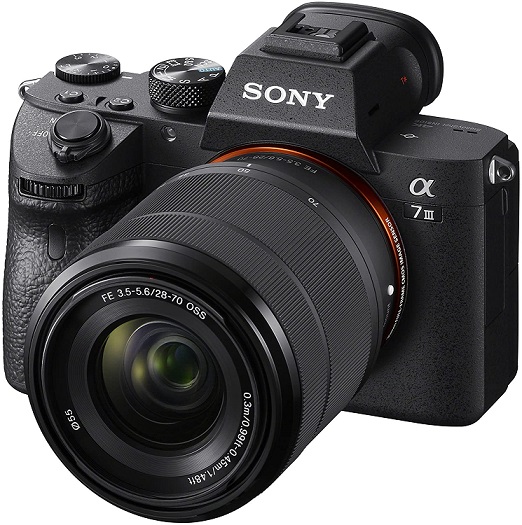
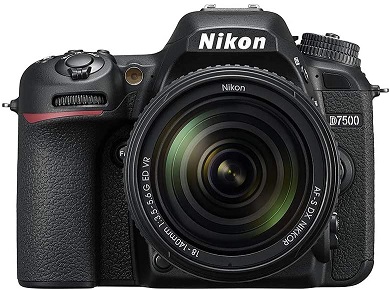
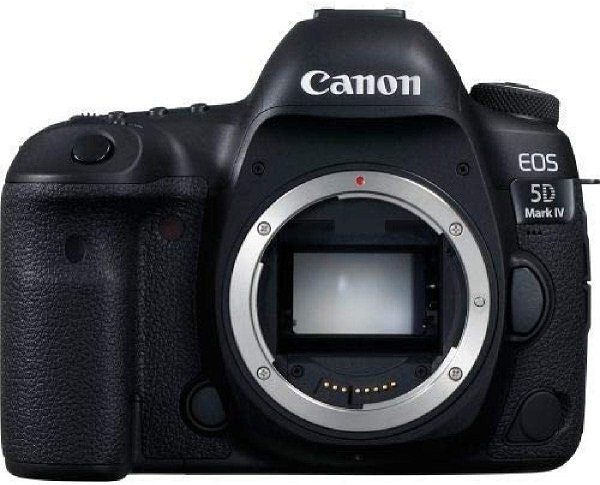

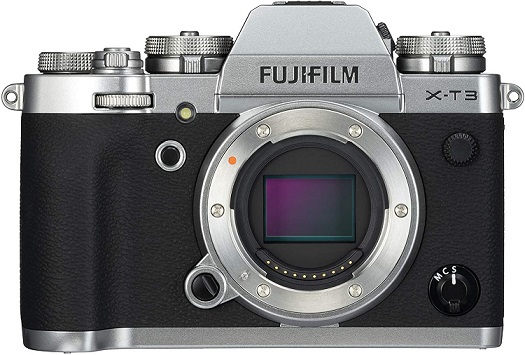

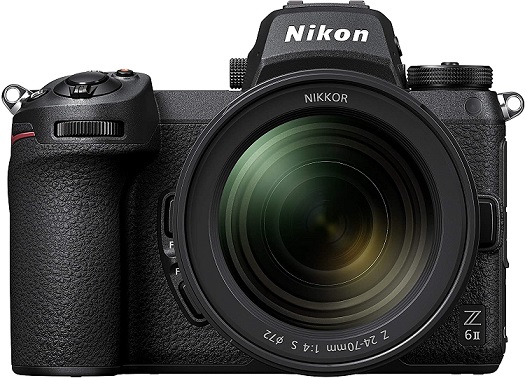





![]()